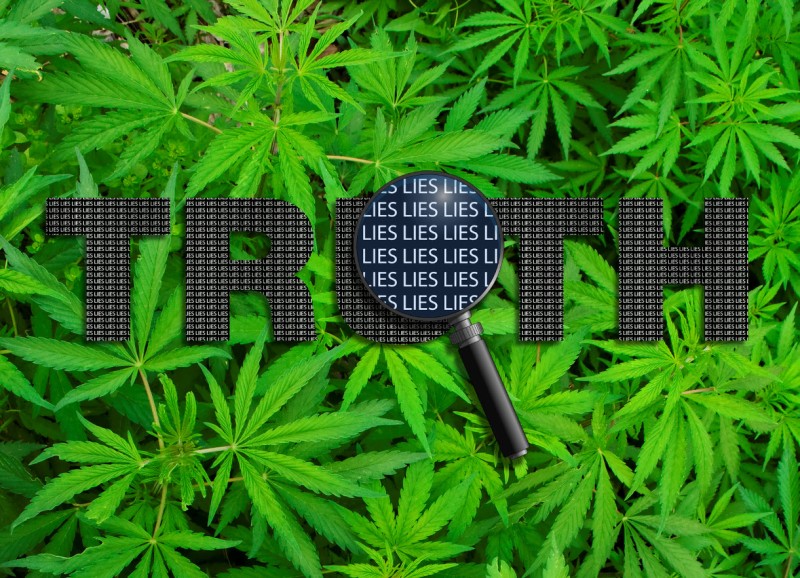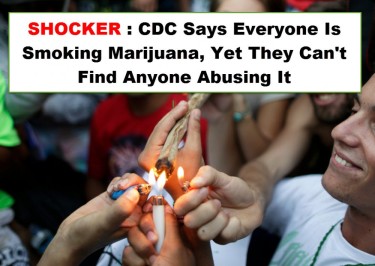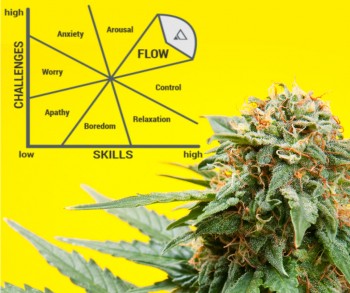
CDC Suggests Cannabis Legalization Reduced Underage Access
The most populous county in Washington State legalized cannabis for adults, and the Centers for Disease Control and Prevention (CDC) just issued a federal report that showed a decrease in teen marijuana usage. The research, which was included in the CDC's Morbidity and Mortality Weekly Report, showed that, in King County, kids in the eighth, tenth, and twelfth grades, there was a notable decline in marijuana use, both current and frequent, between 2008 and 2021.
The results showed that after the state's voters authorized adult-use cannabis through an initiative in November 2012, the prevalence of marijuana usage significantly declined. The researchers hypothesized that the influence of legalization, together with related rules and age restrictions, may have made it harder for teens to obtain marijuana, which may be the cause of the trend. The research also recognized that the COVID-19 epidemic may have played a role in the recent drops in teen marijuana usage.
A Detailed Analysis of Washington State's Legalization
Between 2008 and 2021, the percentage of current use, defined as using marijuana at least once in the past month, dropped significantly. For males, the rate decreased from a peak of 20.4 percent in 2010 to 7.7 percent in 2021, while for females, it dropped from 15.5 percent in 2012 to 9.0 percent in 2021.
The CDC report suggested that the legalization of non-medical cannabis for adults aged 21 and older, with licensed dispensaries requiring proof of age, may have limited access to cannabis for younger individuals and reduce their opportunities to engage in its use. The report emphasized the potential impact of legalization on use prevalence among adolescents. The CDC has previously issued a report that cannabis trimmers may develop carpal tunnel syndrome if they sat and worked trimming cannabis in long stints.
The study utilized data from Washington's Healthy Youth Survey, conducted by the state's Department of Health among public school students. In addition to assessing current use, the researchers examined "frequent use," defined as using marijuana on six or more days within the past month. The overall findings contradicted concerns about increased cannabis use by adolescents and young adults following the legalization of non-medical cannabis in Washington in 2012.
Impact of COVID-19 Pandemic on Teen Marijuana Usage Patterns
The decrease in rates of teenage cannabis use, initiated shortly after the state's legalization, may have been accentuated by the onset of the COVID-19 pandemic and subsequent stay-at-home orders from March 2020 onward, as outlined by the study authors. The report proposes that the extended periods spent at home during the pandemic might have resulted in heightened parental supervision, acting as a deterrent to substance use, including cannabis. This increased oversight may have been reinforced by limited access to cannabis, especially if the primary sources were previously derived from friends or social settings outside the home.
Survey findings reveal a consistent decline in youth cannabis use since its zenith around 2010 and 2012. Notably, among males, frequent cannabis use dropped from 7.5 percent in 2014 to 3.7 percent in 2021, with gradual reductions in between (7.2 percent in 2016, and 6.5 percent in 2018). While female students also witnessed a reduction in cannabis use, the decline was less pronounced. After peaking at 15.5 percent current use in 2012, reported rates stood at 15.2 percent in 2014, 14.6 percent in 2016, 15.1 percent in 2018, and 9.0 percent in 2021. Notably, 2021 marked the sole year of survey data displaying a higher prevalence of current use among female respondents, though males still marginally exceeded females in reporting frequent use. The CDC study highlighted a noteworthy trend, suggesting that the once significant disparities in marijuana use prevalence rates between males and females have nearly vanished in recent years.
Gender-specific Trends: Exploring Evolving Norms in Cannabis Use
Previous studies have suggested a general decline in cannabis use among young people following state-level legalization, as noted by Precious Esie of the CDC and Myduc Ta of Public Health—Seattle and King County. However, the authors highlight a lack of knowledge regarding sex-specific trends.
While the report speculates that variations in cannabis use by gender may be linked to evolving social norms surrounding marijuana, the authors encourage future research to explore trends in cannabis use norms by gender and the potential association between these norms and cannabis use. The CBD itself has updated its own employee handbook to cover future cannabis legalization issues.
The researchers acknowledge the positive downward trends in cannabis use among students in grades 8, 10, and 12 in King County. Still, they emphasize the importance of ongoing monitoring to gain a better understanding of the long-term effects of social phenomena, such as cannabis legalization and pandemic-related disruptions. The CDC is also watching Delta-8 products made from hemp as they become more popular across the US. They also stress the need to assess whether the observed decreases are sustained. Monitoring efforts should prioritize identifying differences across demographic characteristics, including gender identity or sex, to support the development of targeted interventions and ensure equity in programmatic measures for cannabis use reduction and prevention.
These findings align with a separate study of Canadian high school students, revealing a decline in the proportion of youth who perceive marijuana as easily accessible after legalization. The authors attribute this phenomenon to Canada's national marijuana legalization and COVID-related social distancing.
Contrary to concerns, a recent statement from a U.S. health official, Marsha Lopez, chief of the National Institute on Drug Abuse's epidemiological research branch, indicates that teen marijuana use has not increased despite the widespread legalization across the country. Lopez emphasizes that there have been no substantial increases and notes a lack of reported increases in the perceived availability of marijuana among teens, which she finds interesting.
Consistent Findings on Youth Cannabis Consumption
A recent CDC analysis underscored the sustained decrease in both current and lifetime cannabis use rates among high school students amidst the ongoing legalization movement. In Massachusetts, a study published in November indicated that the legalization of marijuana did not elevate the likelihood of youth engaging in cannabis use. However, a notable shift was observed as more students perceived their parents as cannabis consumers following the implementation of the policy change. Additionally, a NIDA-funded study in 2022, published in the American Journal of Preventive Medicine, reinforced that state-level cannabis legalization did not correlate with increased youth consumption. The research revealed that adolescents spending a considerable part of their adolescence under legalization were neither more nor less likely to use cannabis at the age of 15 compared to those with limited exposure to legalization.
Parallelly, a 2022 study by Michigan State University researchers, published in PLOS One, found that cannabis retail sales in legal states might contribute to increased cannabis use among older adults, while underage individuals, unable to purchase cannabis products in retail outlets, did not experience a similar trend. These observations persisted despite adult use of marijuana and certain psychedelics reaching "historic highs" in 2022, as reported in separate data released the previous year. A Gallup poll from the summer of that year further highlighted that half of all American adults have experimented with marijuana, with active cannabis consumption rates surpassing those of tobacco. When segmented by age, 29 percent of individuals aged 18–34 reported currently smoking marijuana, though the survey solely focused on smoking and did not encompass alternative consumption methods like edibles, vaping, or tinctures.
Bottom Line
The CDC study indicates that cannabis legalization in Washington State correlated with a significant reduction in teenage marijuana use, particularly in King County. Factors such as age restrictions, pandemic-related changes, and evolving social norms were explored. The findings align with similar trends globally, challenging concerns about increased youth cannabis consumption following legalization. Despite varied perspectives, the overall consensus points to sustained decreases in teen cannabis use, emphasizing the need for ongoing monitoring and targeted interventions.
THE CDC ON MARIJUANA LEGALIZATION, READ ON...
THE CDC SAYS EVERYONE IS USING CANNABIS, BUT CAN'T FIND ANY ABUSE






